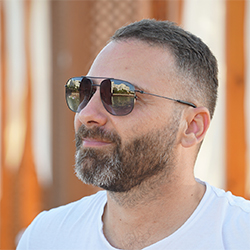Icarus and Daedalus: The Story of the popular Greek myth!
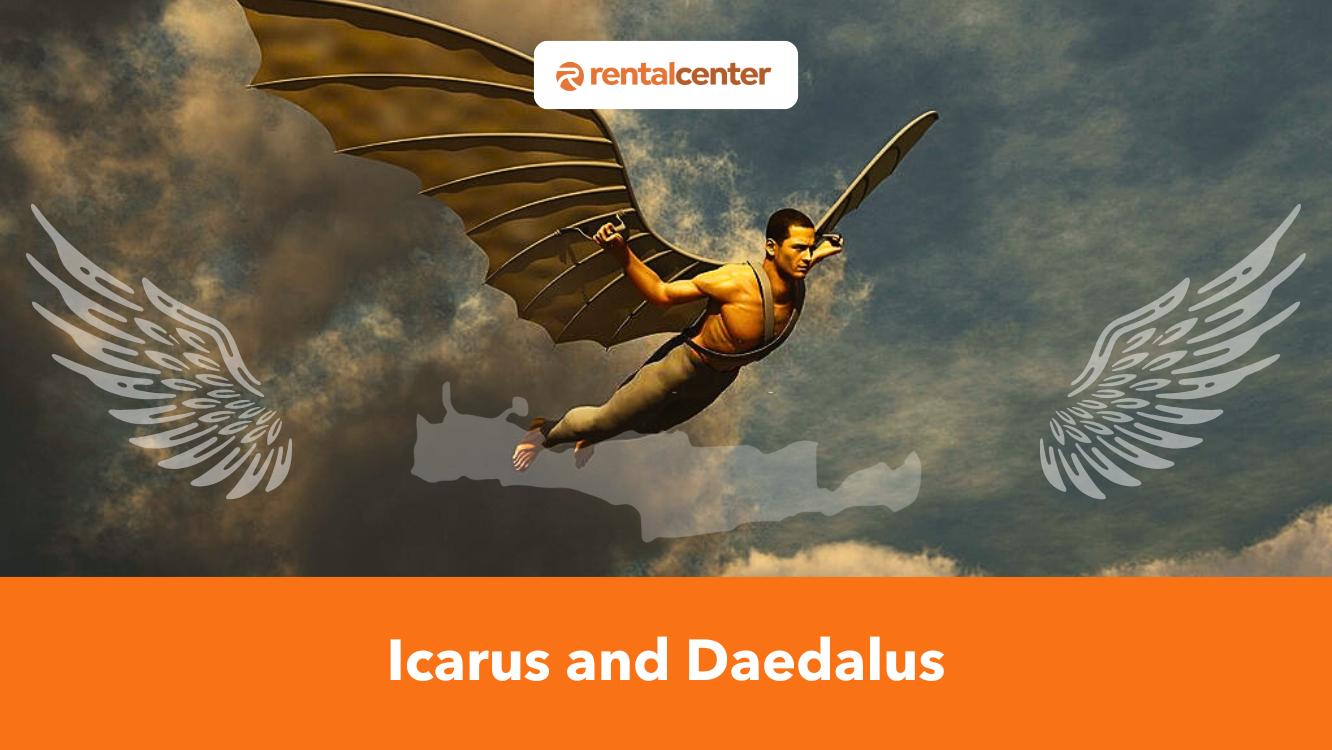
Daedalus and Icarus were father and son in Greek mythology. Daedalus was a skillful architect and craftsman, while Icarus was his only child. King Minos of Crete imprisoned Daedalus and Icarus in the Labyrinth, a maze-like structure that housed the Minotaur, a monstrous creature with the head of a bull and the body of a man. Daedalus made wings of feathers and wax to escape from the island for himself and his son. Daedalus warn Icarus not to fly too close to the sun or too low to the sea, but Icarus was overcome by excitement and flew higher and higher until the wax melted and his wings fell apart. Icarus fell into the sea and drowned. In his honour, the sea near Icaria, where his body was washed ashore, was called the Icarian Sea.
The Roman poet Ovid famously recorded the story of Daedalus and Icarus in his Metamorphoses, a collection of myths and legends that describe the transformations of various beings and phenomena. Ovid’s version is based on earlier sources, such as the Bibliotheca of Pseudo-Apollodorus and the Fabulae of Hyginus. The story also appears in other ancient works, such as the Icaromenippus of Lucian and the Epitome of the Library of Apollodorus. It’s from this myth that we have the expression “Don’t fly too close to the sun”.
What is the Daedalus and Icarus story?
Daedalus, a skilled Athenian craftsman, fled to Crete after killing his nephew Talus. In Crete, he worked for King Minos, constructing the labyrinth to contain the Minotaur. He later married a slave named Naucrate, and they had a son, Icarus. When Daedalus helped Theseus escape the labyrinth, Minos imprisoned Daedalus and Icarus.

To escape, Daedalus made wings from feathers and wax. He warned Icarus not to fly too high, where the sun would melt the wax, or too low, where the sea would dampen the wings. Icarus, exhilarated by flight, ignored the warning and flew too close to the sun. His wings melted, and he fell into the sea and drowned, which became known as the Icarian Sea. Daedalus later fled to Sicily and continued his work there.
Who was Icarus?
Icarus, a figure in Greek mythology, was the son of Daedalus, a master craftsman. He is famous for his tragic attempt to escape Crete using wings made of feathers and wax, invented by his father. Ignoring Daedalus’s warning, Icarus flew too close to the sun, which melted the wax, causing him to fall into the sea and drown. Icarus symbolizes youthful ambition and recklessness.
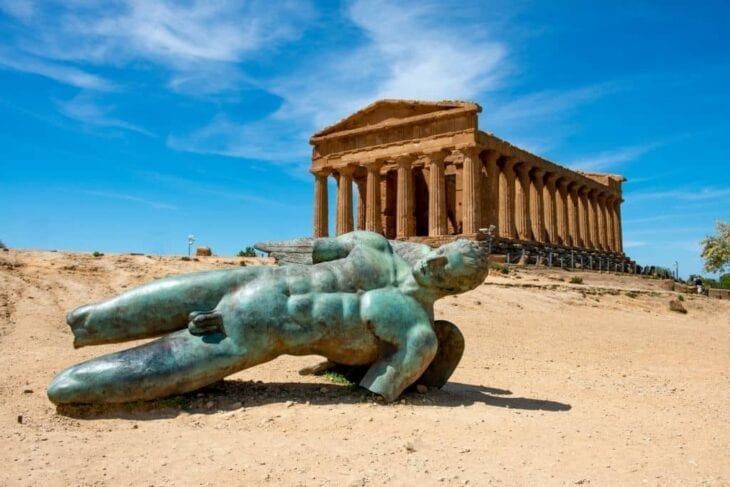
What happened to Icarus?
Icarus met a tragic end after attempting to escape Crete with wings made of feathers and wax, crafted by his father, Daedalus. Ignoring his father’s warning to avoid flying too high, Icarus became captivated by the sensation of flight and soared closer to the sun. The heat melted the wax holding his wings together, causing him to fall into the sea, where he drowned.

What are Icarus wings?
Icarus’ wings were a pair of artificial wings crafted by his father, Daedalus, using feathers, cloth, wax with leather straps. They were created as a mean of escape from their imprisonment in Crete. The wings allowed for human flight but had limitations — flying too close to the sun would melt the wax, while flying too low would dampen the feathers with sea spray. The wings symbolize human ambition, creativity and ingenuity but also represent fragility, as the wax melted when Icarus flew too close to the sun, causing the wings to disintegrate and leading to his tragic death..
What does Icarus’ death symbolise?
Icarus’ death symbolizes the dangers of recklessness, disobedience, and overconfidence. By ignoring his father Daedalus’s warnings, Icarus represents youthful ambition and the consequences of pushing beyond boundaries. His tragic fall serves as a cautionary tale about respecting limits and heeding wise advice to avoid catastrophic outcomes.
Who was Daedalus?
Daedalus was a master craftsman, inventor, and the father of Icarus in Greek mythology. Known for his intellect and innovative abilities, Daedalus is credited with creating the labyrinth that housed the Minotaur and the wings that allowed him and Icarus to attempt escape from Crete. His skill in mechanics and engineering is evident in his creations. As a father, Daedalus showed concern for Icarus’s safety by warning him of the dangers during their flight. Despite his guidance, Icarus ignored his father’s warnings, leading to his tragic death. Daedalus represents ingenuity, but also the limits of control when faced with youthful impulsiveness. Daedalus is pronounced “DEE-duh-lus” in English.
What happened to Daedalus after Icarus died?
After Icarus’s death, Daedalus fled to Sicily, where he worked for King Cocalus. Minos pursued him but was killed by Cocalus’s daughters, ending the chase. Daedalus continued his work as an inventor and architect, helping the king fortify his kingdom. However, King Minos, who sought revenge on Daedalus for aiding Theseus in escaping the labyrinth, pursued him. Minos was eventually killed by Cocalus’s daughters, ending his pursuit of Daedalus.
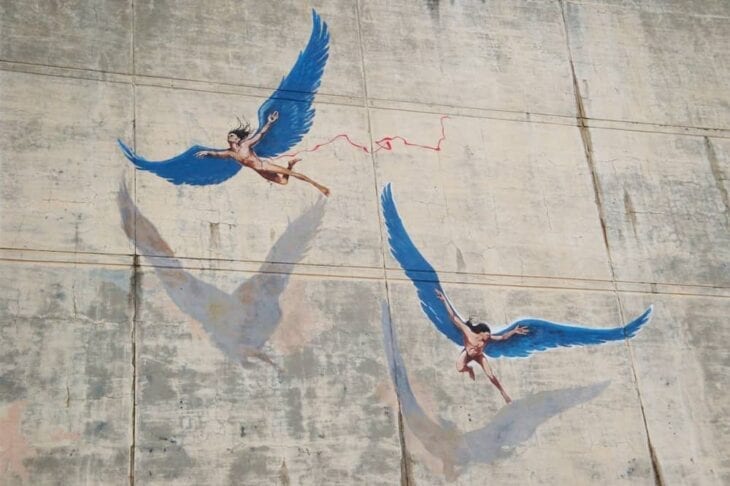
How did Daedalus die?
Daedalus died in different ways according to different versions of the myth. One version says he was killed by King Minos, who followed him to Sicily and tried to force him to reveal the secret of the Labyrinth. Cocalus tricked Minos into bathing and then poured boiling water over him, while another version says he died of old age or a snake bite in Telmessos, a city in Asia Minor.
What does the Daedalus and Icarus story teach us?
The story of Daedalus and Icarus teaches lessons about the dangers of pride, disobedience, and overambition. Icarus’s failure to heed his father’s warnings, leading to his tragic death, symbolizes the consequences of ignoring wise advice. The myth emphasizes the importance of humility, self-awareness, and respecting limits, as humans are fragile and vulnerable compared to the forces of nature. It also reflects the balance between ambition and caution, showing that creativity and ingenuity must be tempered by responsibility.
Why is the myth of Daedalus and Icarus considered a tragedy?
The myth of Daedalus and Icarus is considered a tragedy because it involves the downfall of Icarus, whose excessive pride and disobedience lead to his death, causing immense suffering for his father, Daedalus. Icarus’s tragic flaw, or hubris, pushes him to defy his human limits by flying too close to the sun, resulting in his fatal fall. The story also portrays Daedalus’s sorrow and guilt, as his genius both saves and destroys. The myth illustrates the themes of human fragility, the consequences of overreaching, and the irreversible loss of a loved one.
Why has the story of Daedalus and Icarus remained so popular?
The story of Daedalus and Icarus has remained so popular for three main reasons. Firstly, the story is a powerful allegory for human achievement and pride. It shows the potential and the peril of human creativity, ingenuity and ambition. It warns against the dangers of overreaching, disobeying and challenging the gods and nature. It teaches the importance of moderation, humility and obedience. The story resonates with many people who have faced similar dilemmas or temptations. Secondly, the story is a tragic drama that evokes pity and fear. It portrays the suffering and misfortune of the father and son, who are both talented and heroic but also flawed and doomed. It depicts the reversal of their fortune, the loss of their freedom and the death of their loved one. It arouses the audience’s emotions, who sympathise with their plight and learn from their downfall. Lastly, the story is a source of inspiration and adaptation for various forms of art and culture. It has been retold in numerous books and novels, depicted in films and paintings and referenced in songs and poems. It has been imbued with new meanings and significance, reflecting the values and issues of different times and places. It has influenced the imagination and expression of many artists and writers.
Why were myths important to the ancient Greeks?
Listed below are the reasons why myths like Daedalus and Icarus were important to the ancient Greeks.
- Gods and Goddesses: Myths helped the Greeks understand the natural phenomena they observed, such as the seasons, the weather, the stars and the earthquakes. They attributed these events to the actions of gods and goddesses, who had personalities and emotions like humans. The myth of Persephone, for example, explained why the earth became barren in winter and fertile in spring.
- Valuable Lessons: Myths also taught the Greeks moral values and lessons, such as courage, justice, loyalty and wisdom. They often featured heroes who faced challenges and dangers and gods who rewarded or punished them for their deeds. The myth of Hercules showed how he had to perform twelve impossible tasks to atone for killing his family and how he eventually became immortal.
- Cultural Identity and History: Myths also reflected the Greeks’ cultural identity and history, as they preserved the memories of their ancestors, their wars, their explorations and their achievements. They also expressed the Greeks’ pride in their civilization and their sense of superiority over other peoples. The myth of the Trojan War recounted how the Greeks defeated the Trojans after a ten-year siege and how they brought back the beautiful Helen to Greece.
- Entertainment: Myths also entertained the Greeks and stimulated their imagination and creativity. They were recited by poets, dramatized by playwrights, depicted by artists and performed by actors. They also inspired new forms of literature, such as epic, tragedy, comedy and satire. The myth of Oedipus inspired Sophocles to write a famous tragedy about the tragic fate of a king who unknowingly killed his father and married his mother.
- Religion and Rituals: Myths also connected the Greeks with their religion and rituals, as they explained the origins and functions of the gods, the temples, the sacrifices and the festivals. They also gave the Greeks hope and fear, believing the gods could intervene in human affairs and influence their destiny. The myth of Orpheus and Eurydice shows how Orpheus tried to bring his wife back from the underworld but failed because he disobeyed the god’s command.
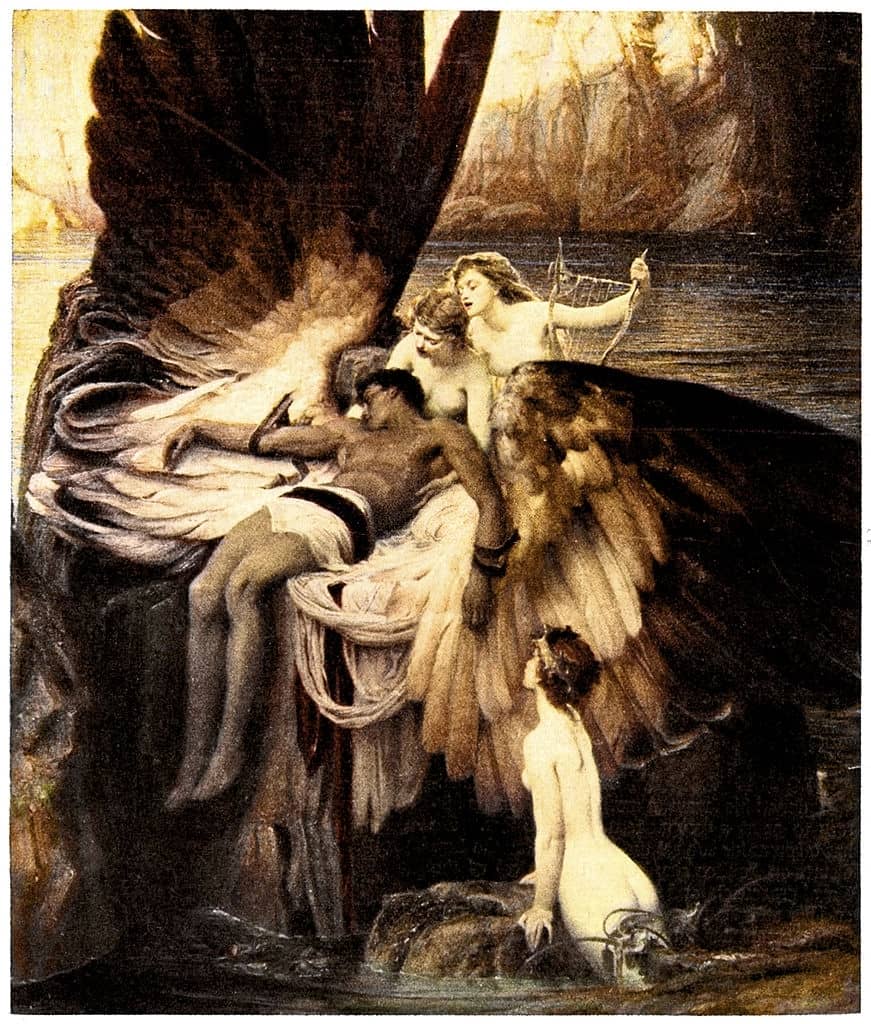
What are the stories from Greek Mythology?
Listed below are the stories from Greek Mythology:
- Knossos: Knossos is a similar story from Greek Mythology. It was the ancient city and palace of King Minos, the son of Zeus and Europa. Knossos Palace was the center of the Minoan civilization, which flourished on Crete from about 2000 to 1400 BCE. Knossos is also associated with the myth of Theseus and the Minotaur, a monstrous creature with the head of a bull and the body of a man. The Minotaur was the offspring of Minos’ wife, Pasiphae and a white bull sent by Poseidon. Minos kept the Minotaur in a labyrinth designed by Daedalus and demanded that every nine years, seven young men and seven young women from Athens be sent as tribute to be devoured by the beast. Theseus, the son of the Athenian king, volunteered to go as one of the victims and with the help of Minos’ daughter Ariadne, who fell in love with him, he managed to kill the Minotaur and escape the labyrinth.
- Minotaur Myth: The Minotaur Myth, a story from Greek Mythology, is one of the most famous monsters in Greek mythology and a symbol of violence and savagery. It was born from the unnatural union of Pasiphae and a bull as a punishment for Minos’ disobedience to Poseidon. The Minotaur had the body of a man and the head and tail of a bull and was so ferocious that Minos had to confine him in a maze-like structure called the labyrinth. It was eventually slain by Theseus, aided by Ariadne’s thread, a clue that helped him find his way out of the labyrinth. The Minotaur’s name means “the bull of Minos”, he is sometimes called Asterion, meaning “starry one”.
- Erotokritos Story: The story about Erotokritos, from the Greek Mythology, is a romantic epic poem by Vitsentzos Kornaros written in the 17th century. It is considered one of the masterpieces of Cretan literature and a classic example of the Greek Renaissance. The poem consists of 10,012 verses in rhyming couplets and tells the story of the love between Erotokritos, the son of a noble adviser to the king of Athens and Aretousa, the king’s daughter. The mediaeval romances of chivalry influence the poem and incorporate elements from Greek mythology, such as the jousting competition, the labyrinth and the intervention of the gods. The poem reflects Crete’s historical and cultural context under Venetian rule and expresses ideals of freedom, justice and patriotism.
- Pygmalion: The story about Pygmalion is a tale from Greek Mythology about a legendary sculptor who fell in love with his creation, a beautiful ivory statue of a woman. He named her Galatea and prayed to Aphrodite, the goddess of love, to bring her to life. Aphrodite granted his wish and Pygmalion and Galatea became a happy couple. They had a son named Paphos, who gave his name to the city in Cyprus where the myth is set. Pygmalion’s story has inspired many artists and writers, such as Ovid, George Bernard Shaw and Jean-Philippe Rameau.
- Pandora: Pandora tale is about story about the first woman created by the gods, according to the myth of Hesiod. She was given as a gift to Epimetheus, the brother of Prometheus, who had stolen fire from the gods and handed it to humans. The gods blessed Pandora with many talents, beauty and a curious and impulsive nature. She was given a jar (often mistranslated as a box) containing all the world’s evils and was told not to open it. However, she could not resist the temptation and unleashed misery, disease and death upon humanity. The only thing that remained in the jar was hope, which some interpreted as a consolation and others as a further curse. Pandora’s story is a classic example of a myth that explains the origin of evil and suffering in the world.
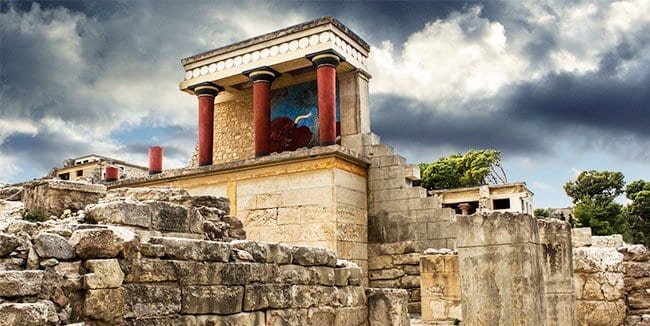
How is Greek Mythology important for Greek Tourism?
Greek mythology is important for Greek tourism because it attracts many visitors interested in the ancient stories and legends of the gods and heroes. Most sites in Greece are connected to mythology, such as the Acropolis, Delphi, Olympia and Mount Olympus. These places offer cultural and historical experiences, scenic views and natural beauty. Tourists can learn about the myths and their meanings and see the monuments and temples built to honour the gods. Greek mythology also influences the arts and culture of Greece, which are part of the tourism appeal. Most museums, theatres, festivals and events showcase the artistic and literary legacy of the myths, such as sculptures, paintings, pottery, poetry and drama. Some examples are the National Archaeological Museum, the Epidaurus Theatre, the Athens Festival and the Odeon of Herodes Atticus. Tourists can enjoy the rich and diverse expressions of the mythological themes and characters and appreciate the creativity and talent of the Greek artists. Greek mythology also enhances the identity and pride of the Greek people, reflected in their hospitality and service to tourists. The myths are part of the Greek heritage and tradition, inspiring the values and virtues of the society. The myths also celebrate the diversity and beauty of the Greek landscape, composed of mountains, islands, seas and forests. Tourists can feel the spirit and beauty of the Greek culture and experience the warmth and friendliness of the locals.
What sea was named after Icarus?
The sea named after Icarus is the Icarian Sea, a Mediterranean Sea subdivision between the Cyclades and Asia Minor. It is described as the part of the Aegean Sea to the south of Chios, east of the Eastern Cyclades and west of Anatolia. It contains the islands of Samos, Cos, Patmos, Leros, Fournoi Korseon and Icaria. The sea was named after Icarus, the son of Daedalus, a skillful craftsman and inventor in Greek mythology. King Minos of Crete imprisoned Icarus and Daedalus in the Labyrinth, a maze-like structure that housed the Minotaur, a monstrous creature with the head of a bull and the body of a man. Daedalus made wings of feathers and wax to escape from the island for himself and his son. Daedalus warn Icarus not to fly too close to the sun or too low to the sea, but Icarus was overcome by giddiness and flew higher and higher until the wax melted and his wings fell apart. Icarus fell into the sea and drowned. In his honour, the sea near Icaria, where his body was washed ashore, was called the Icarian Sea. According to legend, Helios, the sun god, named the sea ‘Icarian’ after the fallen hero.
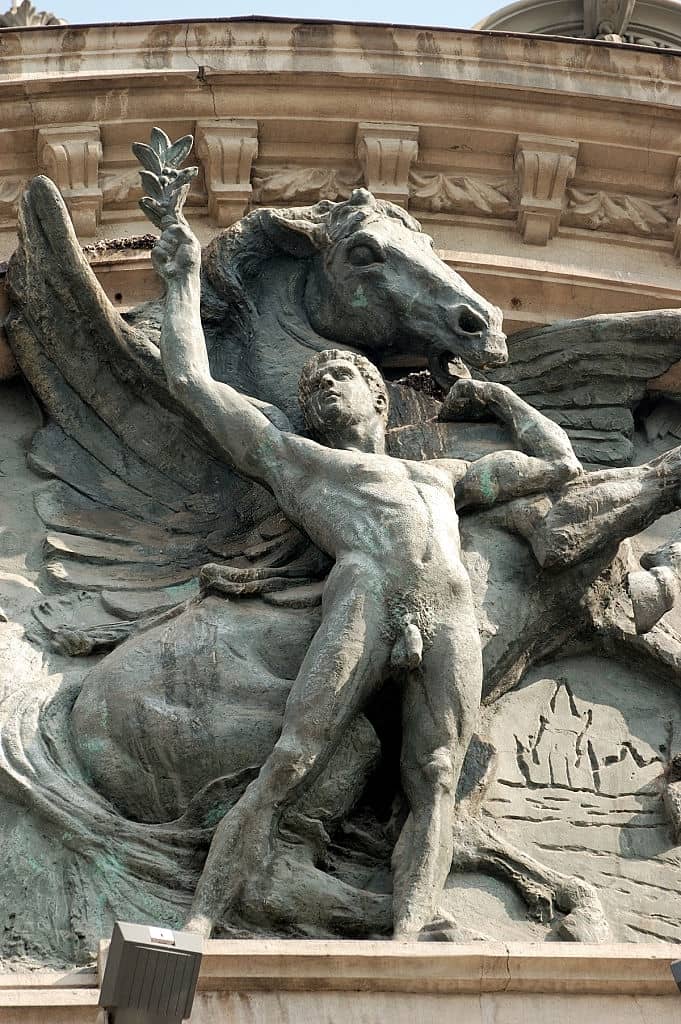
What island is named after Icarus?
The island named after Icarus is Icaria, also spelled Ikaria. It is a Greek island in the Aegean Sea that is 19 kilometres (11.8 miles) southwest of Samos. It is part of the North Aegean region and has a population of 8,843 people. It is also 294.7 kilometres (183.2 miles) northeast of Crete, where Icarus and Daedalus were imprisoned by King Minos and is the largest Greek island, offering a rich and diverse travel experience. It is known for its historical sites, such as the Palace of Knossos and the Samaria Gorge and its beautiful beaches and coastal towns. Visitors to Crete can explore traditional villages, indulge in local cuisine and engage in the island’s culture. A Crete travel guide can provide valuable information on the island’s attractions, accommodations, transportation options and other practical details to help travellers plan their visit to this fascinating destination.
What is the “Icarus complex”?
The Icarus complex is a form of overcompensation due to feelings of inferiority. It is a term in psychology that describes an overambitious personality type that does not recognize its limitations. It is based on the Greek myth of Icarus, who flew too close to the sun with his wax wings and fell into the sea.
Last updated on January 5th, 2025








